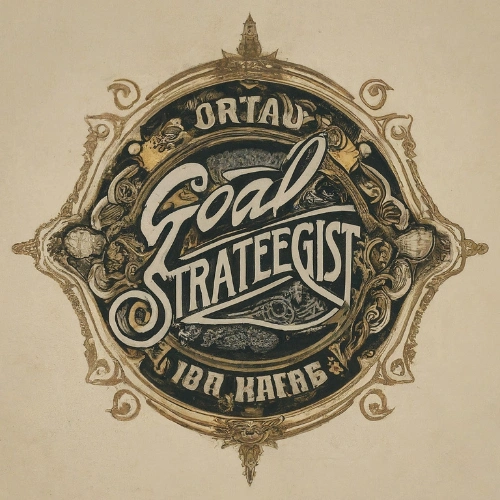Ever wondered what sparked the revolutionary changes for women’s rights in the 60s and 70s? The National Organization for Women (NOW) was at the forefront, championing a seismic shift toward gender equality. Founded in 1966, NOW’s goals were clear-cut and ambitious, aiming to dismantle the systemic barriers women faced in society.
Your understanding of feminism’s history isn’t complete without recognizing NOW’s pivotal role. They set out to not only advocate for women’s rights but to also enforce legislation that protected these rights. Their mission was to create an equal society where women enjoyed the same opportunities and privileges as men, from the workplace to the political arena.
NOW’s goals were a beacon of hope, inspiring generations to take up the mantle of activism. They were more than just objectives; they were the blueprints for a movement that would forever change the landscape of women’s rights in America.
The Formation of the National Organization for Women
In the crucible of the civil rights movement and the ferment of the 1960s, a new champion for women’s liberation began to take shape. The National Organization for Women (NOW) was founded in 1966, spurred by the failure of the Equal Employment Opportunity Commission to enforce Title VII of the Civil Rights Act, which prohibited gender discrimination in employment.
The founders of NOW, including notable figures like Betty Friedan and Pauli Murray, gathered to confront the socio-legal inequalities faced by women. They recognized the need for a civil rights organization for women similar to those fighting for racial justice.
NOW’s formation was a bold move towards challenging the status quo. From the onset, the organization had a multifaceted approach toward advocating for women’s rights. Backed by a diverse group of women and men committed to feminist principles, NOW’s goals included:
- Promoting equal job opportunities and fair employment practices for women
- Securing equal rights regardless of sex via strong federal legislation
- Advancing reproductive freedoms
- Endorsing women’s education, especially higher education pursuits and non-traditional fields of study for women
- Eradicating discrimination in all sectors of society
The founders understood that achieving these goals would redefine women’s place in society, both professionally and personally. They embarked on a relentless quest to mount legislative and judicial challenges that would eventually recalibrate the legal understanding of gender equality.
As advocacy efforts intensified, the groundwork laid by NOW fostered the emergence of countless local chapters. Each one functioned not only as a beacon for collective action but also as a support network for women demanding change. This expansion was crucial for propelling the organization’s goals nationally, highlighting grassroots mobilization as a key strategy for societal transformation.
NOW’s influence grew rapidly, and its strategic legal and political campaigns became a playbook for those fighting for women’s equality on all fronts, allowing the voices of millions to coalesce into a powerful force for change.
NOW’s Clear-Cut and Ambitious Goals
Understanding the National Organization for Women’s goals means delving into the heart of their revolutionary agenda during a pivotal era in history. NOW’s objectives were not only broad but also remarkably specific, targeting the systemic issues that perpetuated gender inequality.
At its core, NOW aimed to:
- Ensure legal equality for all women.
- Advocate for reproductive rights including access to contraception and abortion.
- Promote protective laws for women in the workplace.
- Fight against all forms of gender discrimination.
- Support the civil rights of women and marginalized genders.
Legal Equality stood at the forefront of NOW’s campaign. The organization sought to eliminate discriminatory laws and practices that hindered women’s rights. This included challenging government entities and pursuing judicial remedies to establish legal precedents for equality.
In the workplace, NOW aggressively pushed for equal employment opportunities. They demanded equal pay for equal work, and the removal of barriers to professional advancement. Training programs, maternity leave, and childcare support were also highlighted to facilitate a woman-friendly work environment.
NOW’s commitment to the social well-being of women extended into the realm of education. It’s here they rallied for non-discriminatory education, advocating for equal access to all academic programs and financial aid, as well as the establishment of women’s studies programs in colleges and universities.
The right to control one’s own body formed the bedrock of NOW’s stance on reproductive freedoms. They championed a women’s autonomy over reproductive choices as a fundamental right and vigorously lobbied for the legalization of contraception and abortion services.
The societal influence of NOW cannot be overstated. By setting forth these ambitious goals, they set in motion a wave of change that would forever transform the landscape of women’s rights. With each policy influenced and law changed, they charted a new course towards gender equality.
Advocating for Women’s Rights and Enforcing Legislation
The National Organization for Women took the front lines in the battle for women’s rights, recognizing that advocacy alone wasn’t enough. Enforcing existing legislation and promoting new laws became critical strategies in their effort to cement change. You might be surprised to learn that during the 1960s, several laws intended to protect and empower women were often ignored or weakly enforced. NOW’s leaders worked tirelessly to ensure these laws had teeth.
One key piece of legislation that NOW rallied behind was the Civil Rights Act of 1964, particularly Title VII, which prohibits employment discrimination based on race, color, religion, sex, or national origin. Despite its passage, many employers found loopholes or simply flouted the law. NOW stepped in to demand enforcement, going as far as filing lawsuits and lobbying for government action to hold companies accountable.
Another legislative focus for NOW was the Equal Pay Act of 1963, designed to abolish wage disparity based on gender. Yet, a significant pay gap persisted. NOW advocated for stricter implementation and pushed for policies that further addressed economic injustices against women. They believed that economic stability was a cornerstone of true equality and empowerment.
Engaging in policy-making processes was another avenue through which the organization exerted its influence. NOW’s leaders understood the power of legislation and the importance of having a seat at the table where decisions were made. They lobbied for bills that aligned with their objectives and fostered relationships with politicians who could be allies in their cause.
NOW’s efforts extended beyond the workplace into realms like education and reproductive health. They championed the Educational Amendments of 1972, which included Title IX, banning sex-based discrimination in any education program receiving federal funding. Additionally, they stood firm in their support for reproductive rights, viewing access to contraception and safe abortion services as fundamental to women’s freedom and equality.
By pushing for robust legislation and its vigorous enforcement, NOW sought to create a society in which women could enjoy all the rights and privileges equal to their male counterparts. They aimed to establish not just legal protection but true societal change.
Creating an Equal Society: Opportunities and Privileges for Women
The National Organization for Women’s (NOW) primary aim was to dismantle societal norms that perpetuated female subordination. Economic independence for women was a cornerstone. The drive to establish equal opportunities in the workplace was relentless, with a clear focus on closing the gender pay gap.
- Expansion of opportunities: Women’s access to all job markets, including traditionally male-dominated fields, was non-negotiable for NOW.
- Educational equity: Ensuring that women could pursue any field of study, especially in higher education, without discrimination bolstered their mission towards equal society.
Challenging discriminatory practices within the workforce was part of the everyday fight. Lobbying efforts were critical to this endeavor, targeting policies that hindered women’s ability to compete on an equal footing. Advocacy for affirmative action sought to level the playing field, leading to a society where your sex didn’t determine your professional path.
Key legal battles were another strategy utilized by NOW to enforce anti-discrimination laws. High-profile lawsuits drew public attention and drove home the point that equality was a right, not a privilege. Litigation became a tool not just to react to discrimination but to actively shape a fairer job market.
The pursuit for reproductive rights served to empower women to make choices affecting their bodies without fearing legal repercussions. This freedom was integral for women to maintain control over their life paths, and NOW understood the deep connection between reproductive rights and broader economic and social liberties.
The notion of an equal society was envisioned by NOW as one where opportunities and privileges were accessible without gender-based restrictions. Crafting such a society required fundamental changes in law, policy, and public perception—a challenge that NOW welcomed with open arms as they continued their relentless advocacy.
NOW’s Enduring Legacy and Impact on Women’s Rights
As you delve into the history and influence of the National Organization for Women, you’ll find that their legacy extends far beyond the 1960s. NOW’s foundational efforts have significantly shaped women’s rights and continue to impact gender equality today.
Their arduous work toward economic independence and the fight to close the gender pay gap have led to notable successes. According to the U.S. Census Bureau, the 1960s saw women earning merely 60% of what men did. Over the years, that gap has narrowed.
| Year | Women’s Earnings as Percentage of Men’s |
|---|---|
| 1960 | 60% |
| 1980 | 64% |
| 2000 | 73% |
| 2020 | 82% |
Although the gap persists, the upward trend signifies progress, driven by the type of advocacy and legal challenges NOW pioneered.
Educational equity has seen leaps forward as well, with women not only accessing higher education in greater numbers but also pursuing and excelling in diverse fields. Your understanding of workplace diversity today is in part due to NOW’s early pushes against discrimination, opening doors for women in sectors from which they were traditionally excluded.
The advancement of reproductive rights, fiercely championed by NOW, has been central to women’s autonomy. NOW’s stance posited reproductive freedom as intrinsically linked to economic and social equality, a view that has influenced numerous legislative developments and court rulings since.
Today, the ripple effects of NOW’s activism are seen in the increased representation of women in leadership roles, both politically and corporately, and in the ongoing discussions about gender and equality. The organization’s ethos has inspired generations and fostered a culture where the fight for women’s rights is ever-evolving.
The history of NOW is a testament to the power of collective action. Their ability to spark conversation, influence policy, and dismantle systemic barriers has undeniably contributed to the advancements you see in the fight for gender equality. Their goals of creating an egalitarian society reverberate today, reminding you that progress is continuous and the pursuit of equality remains a prevailing force.
Conclusion
Reflecting on the National Organization for Women’s journey reveals the strides made in women’s rights and the importance of steadfast advocacy. Your understanding of NOW’s goals underscores the organization’s pivotal role in shaping a more equitable society. As you move forward, remember the impact of collective effort and the ongoing need for vigilance in the fight for gender equality. Let the history of NOW inspire you to continue advocating for progress and to appreciate the victories achieved thus far.


Leave a Reply